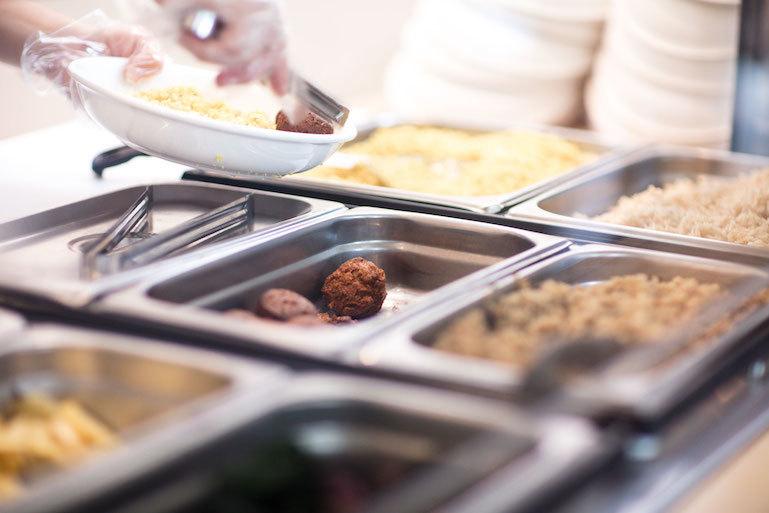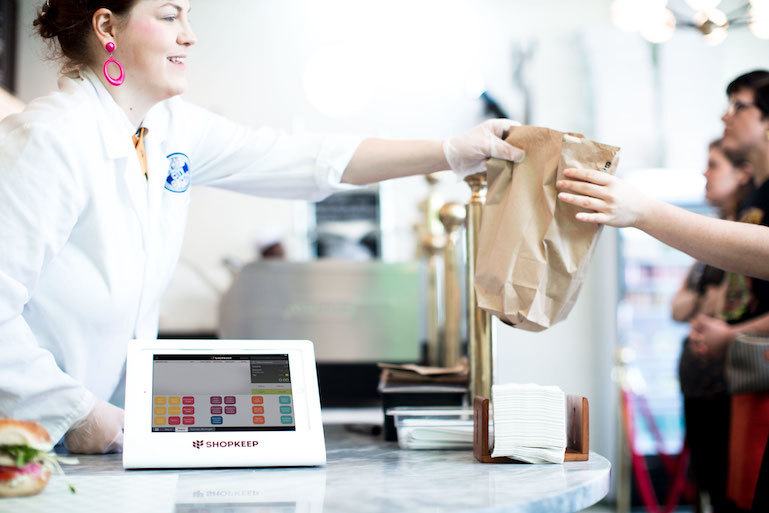
16 Quick Tips For Improving Restaurant Operations
If you’re looking to run your restaurant as efficiently as possible, the best thing you can do is learn how to improve restaurant operations.
The restaurant business is one of the simplest and oldest business concepts ever devised. Historians tell us it predates even Roman times. While the notion of cooking and serving food for the public may be simple, in practice, restaurant management is a very complicated affair.
It encompasses all the elements of any other retail business like stock management, inventory control, and staffing. At the same time, a bit of artistry is necessary to create an exciting menu and appealing dishes.
Operational Efficiency is Key
You can have a stellar menu, excellent food, and conscientious waitstaff and still lose your shirt. Then again, you can have naive teenagers asking people if they’d like fries with their orders and make a mint. The difference is how efficiently the restaurant is operated.
Here are some tips and advice on ways to improve your restaurant’s operations so that you’ll have the best chance of being successful.
SEE ALSO: Everything You Need to Know About Improving Restaurant Efficiency
Don’t Skimp on Training
In the Army, they say there is the right way, the wrong way, and the Army way. The reasoning behind this attitude is that right or wrong, things run more smoothly when everyone is on the same page.
If you don’t have a detailed training program, then you are missing the opportunity to establish standard operating procedures that will help your restaurant run efficiently while you take control of the costs.
You may have the best employees in the world, but if everyone is going their own way, bad things can happen quickly when a real rush hits and catches you shorthanded. This doesn’t mean that there is no room for autonomy on the part of your staff members. A certain amount of leeway should always be given and even encouraged. That is one of the best ways to find better ways of doing things.
If an employee shows you a more efficient way to do something, a cheaper way to get the same results or a way to improve customer satisfaction without increasing expenses, it’s smart to update your training procedures to include good ideas.
Explain the Why
Something you need to include in your training is the reasoning behind each standard operating procedures. No one likes to be told to do something a certain way if it doesn’t make sense to them. To help get the best out of your staff, be sure to explain why you insist on things being done in certain ways. Knowing the why behind a procedure makes it much more likely that your staff will stick to established standards.
Reduce Food Waste and Create Food Cost Cards
One of the most basic expenses that everyone running a restaurant needs to track diligently is food cost. As it is, the food and beverage industry operates on some of the slimmest profit margins of any business type, which on average, are just 6.1 percent.
If you have too much food going out the front door in doggy bags or out the back door in garbage cans, you are literally throwing away money and need to check your portion sizing and inventory levels.
Beyond that, if you don’t know what a dish is costing you to make, you can’t know what to charge for it to make a profit. Using a food costs calculator to help you reduce waste can significantly improve your bottom line. You should have a costing card for every item on your menu.
SEE ALSO: Everything You Need to Know About How to Reduce Food Waste
Give Your Workers the Tools They Need
One of the most effective ways to suddenly improve the operational efficiency of your restaurant’s front-of-house and back-of-house is to make sure your employees have the proper tools to do their work. Don’t assume you know the answers. Ask them what they don’t have that they need, and what they have but need to replace.
Even if they may not be aware of the latest restaurant technology, taking time to find out your staff’s pain points will go a long way towards pointing you in the right direction. It will also help you maintain morale and build employee loyalty.
Your people may not need anything more than extra glassware or a new set of tongs. Then again, maybe they really need is a more modern restaurant point of sale system to speed up the customer payment process.
Like Richard Branson, founder of Virgin Industries, often says, “Take care of your employees, and they’ll take care of your business.” Taking time to talk with them builds a feeling of inclusiveness, and since they are the ones on the frontline, it provides you with invaluable insight into what is really happening.
Embrace New Technology
Babies laughing and kittens playing may get most of the online attention, but the computer age has done a lot for the restaurant industry. Modern restaurant technology has significantly lightened the management workload and given restaurant managers access to a wealth of information they never dreamed of in the past.
Individual programs can be purchased or integrated systems, like those offered by ShopKeep, can greatly impact almost every phase of your operation. Here are just a few of the bells and whistles available to make your life easier and restaurant operate more efficiently.
Improve Order Times and Accuracy
Paper order tickets have been a nightmare almost as long as there have been restaurants. They get misplaced and damaged. Servers forget to submit them after their shift. Kitchen staff have trouble reading them sometimes. At best, the dining staff has to walk each order to the back of the house to hand each ticket to the line cooks.
Tablet-based systems have done away with much of that. Servers can punch in the customer’s order while still at the table, and it’s automatically transmitted to the kitchen. This eliminates the chance for handwriting to be misinterpreted, tickets to be mislaid or damaged, and leaves servers free to take care of their tables instead of running back to the kitchen with every order.
Simplify Inventory Management
Having to throw away food supplies that have gone bad or telling diners their favorite dish is off the menu because a minor ingredient is unavailable is a nightmare for any restaurateur. One way wastes money, and the other can cost you customers.
With today’s technology, usage can automatically be monitored down to the dish level. This not only helps you avoid being over or understocked, but it can also make it easier to detect employee theft or the misuse of ingredients.
Integrated Payments and Bookkeeping
Honestly, it feels good to be sitting in front of a large pile of cash at the end of the day. However, it’s not so much fun to count a collection of coins and fill out lengthy deposit slips. In today’s world, cash customers are becoming rarer by the day. It seems people are even moving away from paper checks and debit cards.
With modern POS systems, you can expand the types of payments you accept to include e-wallets, Apple Pay, and EMV chip cards. Best of all, the information can be fed directly into your bookkeeping software, so you won’t have to spend so much time updating spreadsheets.
Expand Your Reach and build Customer Loyalty
You might not think of this as applying to how efficiently your restaurant operates but think about how much time and effort you put into trying to attract new customers and keep the ones you have coming back for more.
Modern restaurant marketing technology makes it possible for you to manage multiple social media and other online accounts automatically. This naturally reduces your workload. You can even create gift cards, and customer loyalty programs that all but manage themselves in just moments.
SEE ALSO: How to Attract More Restaurant Customers on the Cheap
Managing Your People
Other than food, staffing is the largest expense most restaurant owners and managers face. Overstaffing can kill your bottom line and understaffing hurts employee morale and directly impacts customer service. On top of that, it’s tough to keep track of who needs a day off, when they need it, and who wants more hours while balancing employees’ needs against your store’s needs. Face it. Scheduling is a pain.
With the software that is available now, however, it doesn’t have to be. Analytics and employee reporting can tell you exactly what is happening, so you can adjust your staffing levels, and scheduling software works out the details.
Manage Your Life
You’ve got to love the restaurant business to stay in it. If you didn’t enjoy it, you would get a desk job where 50 plus hour workweeks aren’t the norm, and you aren’t on call every hour of the day.
Imagine being able to take a vacation day. With today’s restaurant POS systems, you can actually improve your efficiency by taking a break once in a while. The beauty of it is that you can get out of the store and still be able to keep track of what is going on. With the right systems in place and your smartphone, you can almost keep track of what is happening better than if you were there yourself. Many times a little time away makes a huge difference in how well YOU operate.

Talk to Your People
This may be the very best piece of advice in this entire article. Your staff members are the ones on the front line. You may stop by a table and speak to a guest or be called in if there is a major problem in the kitchen, but it’s your people who see, hear and know everything that is happening. They are also the ones who can make or break your business.
At least once a month, preferably more often, hold staff meetings. Come prepared to listen more than you talk. If you have good people, they will tell what is working and what isn’t. Once they see you are open to suggestions, they will bring you ideas on how to improve your operations that may never have occurred to you.
These types of meetings are also a good chance to clear the air of any grievances people might have between each other or with you. Remember to keep an open mind and play fair. This is your chance to be the loving parent so try to avoid going into tyrant mode.
Schedule the Nasties
Every restaurant has chores that no one wants to handle, whether it’s scraping the gum out from under the tables, cleaning out the grease traps or pulling decorations off the walls and washing them.
You should have a strict schedule in place for these items to be taken care of. They should be assigned to specific people or teams if needed so that accountability can be maintained. Give everyone a turn, including yourself, to show how fair you are.
Change Your Palette
To be clear, this suggestion has nothing to do with how you taste food. It is more about your taste in decor. Colors have been found to have a profound effect on eating habits and mood in general.
Reds, whites, and greens encourage overindulging and cause people to eat more, so they could increase your ticket sizes. Blues act as an appetite suppressant. Beige tones give a feeling of relaxation, so they will encourage patrons to linger, but orange causes anxiety and could help you turn over your tables faster. Depending on your overall goals a change in color scheme could help improve your operational efficiency.
Seek Help
For many, this is the hardest suggestion to put into play. As a group, restaurant managers and owners tend to be an independent lot. The simple truth though is that no one can be an expert at every possible aspect of any business much less one as complex as food service.
Whether it’s your menu selections, your accounting system or the layout of your kitchen or dining room, specialists can help you make improvements to how your business operates. Being honest with yourself and seeking out the advice of experts can help to maximize your profits, minimize your expenses and significantly improve the efficiency of your store.
This is not a complete list of suggestions on how to improve your restaurant operations. The sheer variety of restaurant types and possible formats would require a rather lengthy book. However, these little bits of advice are a good starting point to illustrate possible ways to increase the efficiency of your operations.
Want to try ShopKeep for yourself?
Just answer a few easy questions.
Need help finding the right point of sale?
Just complete the form. We’ll call you right back to explain how ShopKeep can work for you.
Hit the ground running.Sprinting, in fact!
Read our free, comprehensive guide, Small Business 101, to learn all you need to know about starting a thriving business.

